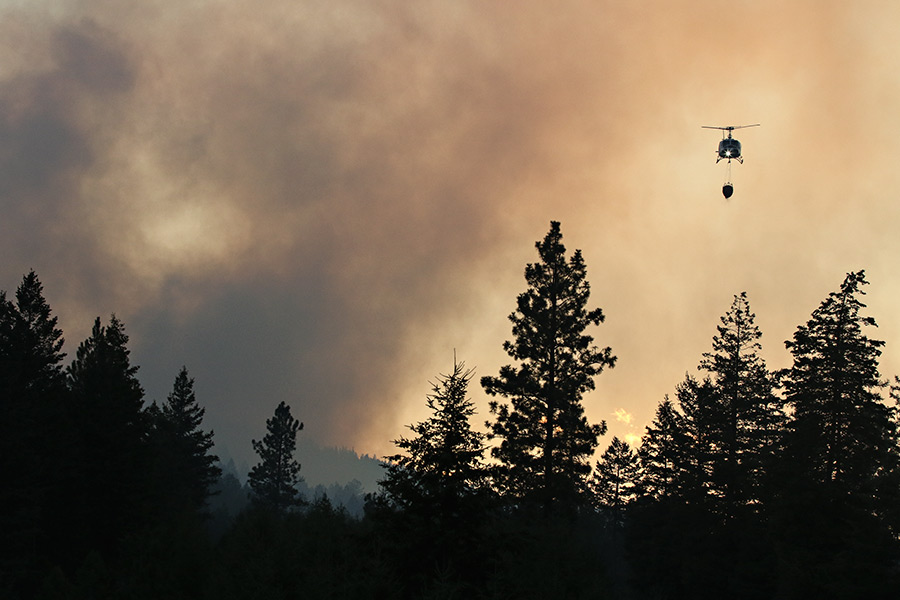Local officials have moved the fire danger in Northwest Montana to “extreme” as hot and dry weather continues to bake the region.
Flathead County Fire Service Area Manager Lincoln Chute said on July 31 that the area is ripe for wildfires and that this has been the driest summer he has ever seen in his more than two decades of fighting fire in the Flathead. He said so far firefighters have gotten “lucky” and have been able to quickly douse most blazes.
During the month of July, there were more than 235 small fires in Flathead County, most of them human caused.
“We have been lucky that none of these fires have gotten away from us, but it feels like it’s just a matter of time before one does,” he said. “Sooner or later we’re not going to be able to catch one of these fires, and it’s not going to be pretty.”
Last week, Stage II fire restrictions were put in place across much of Northwest Montana. Under Stage II restrictions, people are prohibited from having campfires, smoking outside, or using internal combustion engines or welding equipment between the hours of 1 p.m. and 1 a.m. Operating motorized vehicles off trail is also prohibited. Anyone caught violating the restrictions could be fined up to $10,000. Additionally, those responsible for a fire could be held liable for all suppression costs and damage.
On the extreme south end of the Flathead National Forest, the Monahan Fire has burned about 1,500 acres as of July 31, forcing the closure of some trails in the Bob Marshall Wilderness.
On the Flathead Indian Reservation, the Liberty Fire, which was sparked by lightning on July 15 about 17 miles southeast of Arlee, exploded to more than 1,800 acres over the weekend. A Type I incident management team was being assigned to the fire on July 31.
The National Weather Service predicts even more hot weather in the coming weeks, according to hydrologist Ray Nickless.
Nickless said July 2017 tied with 1967 for the fourth-driest July on record with just 0.07 inches of rain. West Glacier received an un-measurable “trace” of precipitation — enough to make the pavement wet, but not much else, Nickless said — making it the second-driest July on record. In July 1960, West Glacier received no rain at all.
